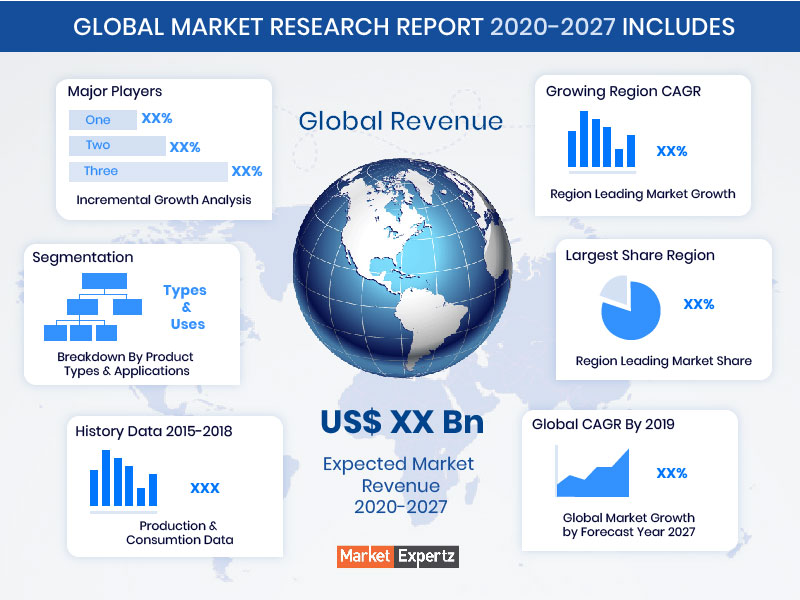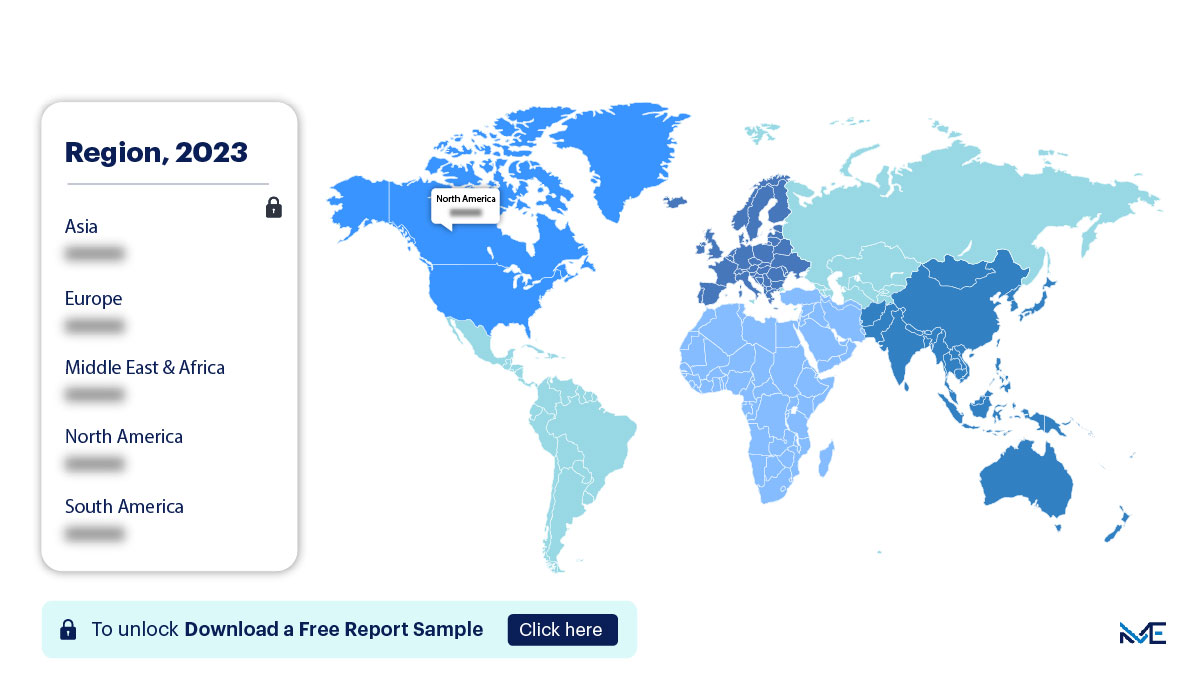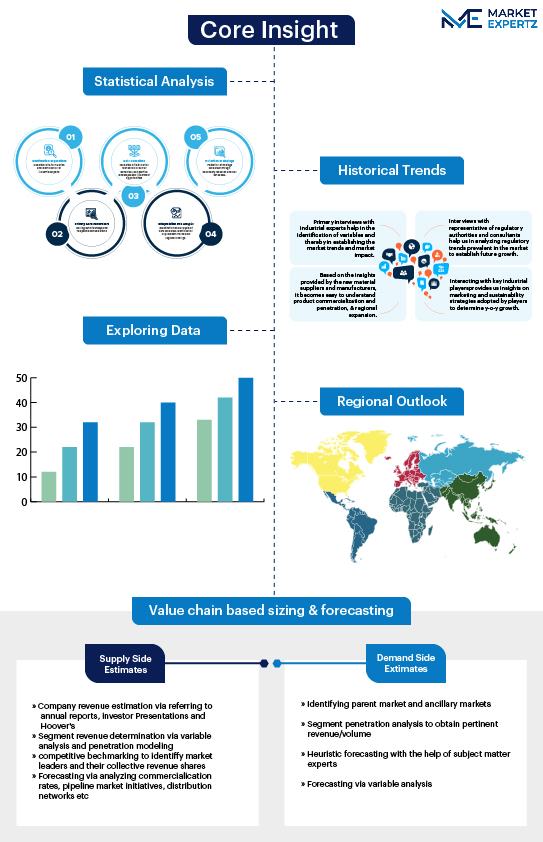Market Snapshot
| Study Period | 2019-2032 |
| Base Year | 2023 |
| Forcast Year | 2023-2032 |
| CAGR | 8.96 |


Gain accurate insights regarding the negative impacts of COVID-19 on all markets and industries
Download Sample PdfReport Overview
The ‘Soil Stabilization Materials Market’ Report published by Market Expertz gives a detailed analysis of the significant growth trends seen in the industry. The report also includes valuable information pertaining to the growth of the industry, market dynamics, profit margin, market share assessment, gross revenue, and market estimations for the business vertical for the years 2020 to 2026. The study also traces the competitive scenario in the global market to highlight the prominent players in the industry that control a sizable portion of the total market share, along with their product portfolio and prevalent expansion strategies.
In this report, the global Soil Stabilization Materials market is valued at USD 15 billion in 2019 and is expected to reach around USD 25 billion by the end of 2027, growing at a CAGR of around 7% between 2019 and 2027.
The Soil Stabilization Materials market study investigates the business sphere and includes scrutiny of the essential aspects that are expected to influence the market outlook. The report consists of key data related to revenue generation, current market scenario, market share, product range, market size, and profit margin estimated for the forecast period.
The report acts as an exhaustive summary of the estimated growth of the market through the forecast years. The industry-wide assessment entails a study of the key market factors that could potentially impact the growth of the market and also projects the growth pattern that the market is expected to exhibit in the forecast duration. The report sheds light on the challenges and hurdles that market players will face in the Soil Stabilization Materials market in the coming years, underlining the growth prospects prevalent in the market that are speculated to impact the industry trends.

LEADING PLAYERS
The report gives an in-depth assessment of the top companies functioning in the global sector and controlling a sizable portion of the overall market. This section also breaks down the expansion tactics adopted by these companies, along with a detailed assessment of their strategic initiatives by highlighting recent deals, mergers & acquisitions, joint ventures, collaborations, product launches, and technological upgradation. The report creates elaborate company profiles of all leading companies to provide the readers with all relevant data on the competitive landscape, enabling them to capitalize on existing and emerging growth prospects by taking well-informed decisions.
Highlights from the competitive outlook of the Soil Stabilization Materials market:
Companies engaged in the industry:
Adelaide Brighton Limited, Ube Industries, Ltd., Tensar International Corporation, Inc., Graymont Limited, Koninklijke Ten Cate nv, SNF Holding, Lhoist and Thrace Group, Sibelco Australia Ltd., Boral Limited and Shelby Materials
Critical parameters assessed as part of the competitive landscape in the report:
- Gross Revenue
- Profit margins
- Product sales trends
- Industry analysis of each company
- Overview of the organization
- Product pricing
- Company profiles
- Sales and distribution channels
An extensive analysis of the Soil Stabilization Materials market with regards to the product landscape and application spectrum:
Type landscape:
Polymers, Minerals, Stabilizing Agents
Application landscape:
Industrial, Agricultural
Information offered in the report:
- Anticipated returns to be recorded by each of the application listed in the report
- Market share accounted by every application segment over the analysis period
- Growth rate projected for all the application segments for the coming years
Download the report summary now!
Request pdf SampleRegional outlook of the Soil Stabilization Materials market:
The Global Soil Stabilization Materials Market has been segmented into:
- North America
- Europe
- Asia Pacific
- Latin America
- Middle East & Africa
An overview of the information included in the report relating to the geographical indicators:
- Data related to the consumption rate in each region
- Expected rise in the consumption rate in all regions over the forecast period
- Projected growth in market share of every region studied in the report
- Regional contribution and revenue generation by all geographies
- Anticipated growth rate over the projected duration for every region
Key highlights of the Soil Stabilization Materials market report:
- Regional demand estimation and forecast
- Pre-commodity pricing volatility
- Technological updates analysis
- Location Quotients Analysis
- Raw Material Sourcing Strategy
- Competitive Analysis
- Product Mix Matrix
- Vendor Management
- Cost Benefit Analysis
- Supply chain optimization analysis
- Patent Analysis
- Carbon Footprint Analysis
- R & D Analysis
- Mergers and Acquisitions
Other essential aspects of the report:
- The study encompasses details about critical parameters that are expected to influence the growth of the market in the future.
- It further discusses the driving factors and explains their impact on the profit generation of this sector.
- The study includes information pertaining to the challenges that the market could potentially encounter over the anticipated timeline and its impact on the market space.
TABLE OF CONTENTS: GLOBAL SOIL STABILIZATION MATERIALS MARKET
Chapter 1. MARKET SYNOPSIS
1.1. Market Definition
1.2. Research Scope & Premise
1.3. Methodology
1.4. Market Estimation Technique
Chapter 2. EXECUTIVE SUMMARY
2.1. Summary Snapshot, 2016 – 2027
Chapter 3. INDICATIVE METRICS
3.1. Macro Indicators
Chapter 4. SOIL STABILIZATION MATERIALS MARKET SEGMENTATION & IMPACT ANALYSIS
4.1. Soil Stabilization Materials Segmentation Analysis
4.2. Industrial Outlook
4.3. Price Trend Analysis
4.4. Regulatory Framework
4.5. Porter’s Five Forces Analysis
4.5.1. Power Of Suppliers
4.5.2. Power Of Buyers
4.5.3. Threat Of Substitutes
4.5.4. Threat Of New Entrants
4.5.5. Competitive Rivalry
Chapter 5. SOIL STABILIZATION MATERIALS MARKET BY Type INSIGHTS & TRENDS
5.1. Segment 1 Dynamics & Market Share, 2019 & 2027
5.2. Polymers
5.2.1. Market Estimates And Forecast, 2016 – 2027 (USD Million)
5.2.2. Market Estimates And Forecast, By Region, 2016 – 2027 (USD Million)
5.3. Minerals
5.3.1. Market Estimates And Forecast, 2016 – 2027 (USD Million)
5.3.2. Market Estimates And Forecast, By Region, 2016 – 2027 (USD Million)
5.4. Stabilizing Agents
5.4.1. Market Estimates And Forecast, 2016 – 2027 (USD Million)
5.4.2. Market Estimates And Forecast, By Region, 2016 – 2027 (USD Million)
Chapter 6. SOIL STABILIZATION MATERIALS MARKET BY Application INSIGHTS & TRENDS
6.1. Segment 2 Dynamics & Market Share, 2019 & 2027
6.2. Industrial
6.2.1. Market Estimates And Forecast, 2016 – 2027 (USD Million)
6.2.2. Market Estimates And Forecast, By Region, 2016 – 2027 (USD Million)
6.3. Agricultural
6.3.1. Market Estimates And Forecast, 2016 – 2027 (USD Million)
6.3.2. Market Estimates And Forecast, By Region, 2016 – 2027 (USD Million)
Chapter 7. SOIL STABILIZATION MATERIALS MARKET REGIONAL OUTLOOK
7.1. Soil Stabilization Materials Market Share By Region, 2019 & 2027
7.2. NORTH AMERICA
7.2.1. North America Soil Stabilization Materials Market Estimates And Forecast, 2016 – 2027, (USD Million)
7.2.2. North America Soil Stabilization Materials Market Estimates And Forecast By Segment 1, 2016 –2027, (USD Million)
7.2.3. North America Soil Stabilization Materials Market Estimates And Forecast By Segment 2, 2016 –2027, (USD Million)
7.2.4. North America Soil Stabilization Materials Market Estimates And Forecast By Segment 3, 2016 –2027, (USD Million)
7.2.5. U.S.
7.2.5.1. U.S. Soil Stabilization Materials Market Estimates And Forecast, 2016 – 2027, (USD Million)
7.2.5.2. U.S. Soil Stabilization Materials Market Estimates And Forecast By Segment 1, 2016 –2027, (USD Million)
7.2.5.3. U.S. Soil Stabilization Materials Market Estimates And Forecast By Segment 2, 2016 –2027, (USD Million)
7.2.5.4. U.S. Soil Stabilization Materials Market Estimates And Forecast By Segment 3, 2016 –2027, (USD Million)
7.2.6. CANADA
7.2.6.1. Canada Soil Stabilization Materials Market Estimates And Forecast, 2016 – 2027, (USD Million)
7.2.6.2. Canada Soil Stabilization Materials Market Estimates And Forecast By Segment 1, 2016 –2027, (USD Million)
7.2.6.3. Canada Soil Stabilization Materials Market Estimates And Forecast By Segment 2, 2016 –2027, (USD Million)
7.2.6.4. Canada Soil Stabilization Materials Market Estimates And Forecast By Segment 3, 2016 –2027, (USD Million)
7.3. EUROPE
7.3.1. Europe Soil Stabilization Materials Market Estimates And Forecast, 2016 – 2027, (USD Million)
7.3.2. Europe Soil Stabilization Materials Market Estimates And Forecast By Segment 1, 2016 –2027, (USD Million)
7.3.3. Europe Soil Stabilization Materials Market Estimates And Forecast By Segment 2, 2016 –2027, (USD Million)
7.3.4. Europe Soil Stabilization Materials Market Estimates And Forecast By Segment 3, 2016 –2027, (USD Million)
7.3.5. GERMANY
7.3.5.1. Germany Soil Stabilization Materials Market Estimates And Forecast, 2016 – 2027, (USD Million)
7.3.5.2. Germany Soil Stabilization Materials Market Estimates And Forecast By Segment 1, 2016 –2027, (USD Million)
7.3.5.3. Germany Soil Stabilization Materials Market Estimates And Forecast By Segment 2, 2016 –2027, (USD Million)
7.3.5.4. Germany Soil Stabilization Materials Market Estimates And Forecast By Segment 3, 2016 –2027, (USD Million)
7.3.6. FRANCE
7.3.6.1. France Soil Stabilization Materials Market Estimates And Forecast, 2016 – 2027, (USD Million)
7.3.6.2. France Soil Stabilization Materials Market Estimates And Forecast By Segment 1, 2016 –2027, (USD Million)
7.3.6.3. France Soil Stabilization Materials Market Estimates And Forecast By Segment 2, 2016 –2027, (USD Million)
7.3.6.4. France Soil Stabilization Materials Market Estimates And Forecast By Segment 3, 2016 –2027, (USD Million)
7.3.7. U.K.
7.3.7.1. U.K. Soil Stabilization Materials Market Estimates And Forecast, 2016 – 2027, (USD Million)
7.3.7.2. U.K. Soil Stabilization Materials Market Estimates And Forecast By Segment 1, 2016 –2027, (USD Million)
7.3.7.3. U.K. Soil Stabilization Materials Market Estimates And Forecast By Segment 2, 2016 –2027, (USD Million)
7.3.7.4. U.K. Soil Stabilization Materials Market Estimates And Forecast By Segment 3, 2016 –2027, (USD Million)
7.4. ASIA-PACIFIC
7.4.1. Asia Pacific Soil Stabilization Materials Market Estimates And Forecast, 2016 – 2027, (USD Million)
7.4.2. Asia Pacific Soil Stabilization Materials Market Estimates And Forecast By Segment 1, 2016 –2027, (USD Million)
7.4.3. Asia Pacific Soil Stabilization Materials Market Estimates And Forecast By Segment 2, 2016 –2027, (USD Million)
7.4.4. Asia Pacific Soil Stabilization Materials Market Estimates And Forecast By Segment 3, 2016 –2027, (USD Million)
7.4.5. CHINA
7.4.5.1. China Soil Stabilization Materials Market Estimates And Forecast, 2016 – 2027, (USD Million)
7.4.5.2. China Soil Stabilization Materials Market Estimates And Forecast By Segment 1, 2016 –2027, (USD Million)
7.4.5.3. China Soil Stabilization Materials Market Estimates And Forecast By Segment 2, 2016 –2027, (USD Million)
7.4.5.4. China Soil Stabilization Materials Market Estimates And Forecast By Segment 3, 2016 –2027, (USD Million)
7.4.6. INDIA
7.4.6.1. India Soil Stabilization Materials Market Estimates And Forecast, 2016 – 2027, (USD Million)
7.4.6.2. India Soil Stabilization Materials Market Estimates And Forecast By Segment 1, 2016 –2027, (USD Million)
7.4.6.3. India Soil Stabilization Materials Market Estimates And Forecast By Segment 2, 2016 –2027, (USD Million)
7.4.6.4. India Soil Stabilization Materials Market Estimates And Forecast By Segment 3, 2016 –2027, (USD Million)
7.4.7. JAPAN
7.4.7.1. Japan Soil Stabilization Materials Market Estimates And Forecast, 2016 – 2027, (USD Million)
7.4.7.2. Japan Soil Stabilization Materials Market Estimates And Forecast By Segment 1, 2016 –2027, (USD Million)
7.4.7.3. Japan Soil Stabilization Materials Market Estimates And Forecast By Segment 2, 2016 –2027, (USD Million)
7.4.7.4. Japan Soil Stabilization Materials Market Estimates And Forecast By Segment 3, 2016 –2027, (USD Million)
7.4.8. AUSTRALIA
7.4.8.1. Australia Soil Stabilization Materials Market Estimates And Forecast, 2016 – 2027, (USD Million)
7.4.8.2. Australia Soil Stabilization Materials Market Estimates And Forecast By Segment 1, 2016 –2027, (USD Million)
7.4.8.3. Australia Soil Stabilization Materials Market Estimates And Forecast By Segment 2, 2016 –2027, (USD Million)
7.4.8.4. Australia Soil Stabilization Materials Market Estimates And Forecast By Segment 3, 2016 –2027, (USD Million)
7.5. MIDDLE EAST AND AFRICA (MEA)
7.5.1. Mea Soil Stabilization Materials Market Estimates And Forecast, 2016 – 2027, (USD Million)
7.5.2. Mea Soil Stabilization Materials Market Estimates And Forecast By Segment 1, 2016 –2027, (USD Million)
7.5.3. Mea Soil Stabilization Materials Market Estimates And Forecast By Segment 2, 2016 –2027, (USD Million)
7.5.4. Mea Soil Stabilization Materials Market Estimates And Forecast By Segment 3, 2016 –2027, (USD Million)
7.6. LATIN AMERICA
7.6.1. Latin America Soil Stabilization Materials Market Estimates And Forecast, 2016 – 2027, (USD Million)
7.6.2. Latin America Soil Stabilization Materials Market Estimates And Forecast By Segment 1, 2016 –2027, (USD Million)
7.6.3. Latin America Soil Stabilization Materials Market Estimates And Forecast By Segment 2, 2016 –2027, (USD Million)
7.6.4. Latin America Soil Stabilization Materials Market Estimates And Forecast By Production Process, 2016 –2027, (USD Million)
7.6.5. Latin America Soil Stabilization Materials Market Estimates And Forecast By Segment 3, 2016 –2027, (USD Million)
Chapter 8. COMPETITIVE LANDSCAPE
8.1. Market Share By Manufacturers
8.2. Strategic Benchmarking
8.2.1. New Product Launches
8.2.2. Investment & Expansion
8.2.3. Acquisitions
8.2.4. Partnerships, Agreement, Mergers, Joint-Ventures
8.3. Vendor Landscape
8.3.1. North American Suppliers
8.3.2. European Suppliers
8.3.3. Asia-Pacific Suppliers
8.3.4. Rest Of The World Suppliers
Chapter 9. COMPANY PROFILES
9.1. Adelaide Brighton Limited
9.1.1. Company Overview
9.1.2. Financial Performance
9.1.3. Product Insights
9.1.4. Strategic Initiatives
9.2. Ube Industries, Ltd
9.2.1. Company Overview
9.2.2. Financial Performance
9.2.3. Product Insights
9.2.4. Strategic Initiatives
9.3. Tensar International Corporation, Inc
9.3.1. Company Overview
9.3.2. Financial Performance
9.3.3. Product Insights
9.3.4. Strategic Initiatives
9.4. Graymont Limited
9.4.1. Company Overview
9.4.2. Financial Performance
9.4.3. Product Insights
9.4.4. Strategic Initiatives
9.5. Koninklijke Ten Cate nv
9.5.1. Company Overview
9.5.2. Financial Performance
9.5.3. Product Insights
9.5.4. Strategic Initiatives
9.6. SNF Holding
9.6.1. Company Overview
9.6.2. Financial Performance
9.6.3. Product Insights
9.6.4. Strategic Initiatives
9.7. Lhoist and Thrace Group
9.7.1. Company Overview
9.7.2. Financial Performance
9.7.3. Product Insights
9.7.4. Strategic Initiatives
9.8. Sibelco Australia Ltd
9.8.1. Company Overview
9.8.2. Financial Performance
9.8.3. Product Insights
9.8.4. Strategic Initiatives
9.9. Boral Limited and Shelby Materials
9.9.1. Company Overview
9.9.2. Financial Performance
9.9.3. Product Insights
9.9.4. Strategic Initiatives
RESEARCH METHODOLOGY
A research methodology is a systematic approach for assessing or conducting a market study. Researchers tend to draw on a variety of both qualitative and quantitative study methods, inclusive of investigations, survey, secondary data and market observation.
Such plans can focus on classifying the products offered by leading market players or simply use statistical models to interpret observations or test hypotheses. While some methods aim for a detailed description of the factors behind an observation, others present the context of the current market scenario.
Now let’s take a closer look at the research methods here.
Secondary Research Model
Extensive data is obtained and cumulated on a substantial basis during the inception phase of the research process. The data accumulated is consistently filtered through validation from the in-house database, paid sources as well reputable industry magazines. A robust research study requires an understanding of the overall value chain. Annual reports and financials of industry players are studied thoroughly to have a comprehensive idea of the market taxonomy.
Primary Insights
Post conglomeration of the data obtained through secondary research; a validation process is initiated to verify the numbers or figures. This process is usually performed by having a detailed discussion with the industry experts.
However, we do not restrict our primary interviews only to the industry leaders. Our team covers the entire value chain while verifying the data. A significant number of raw material suppliers, local manufacturers, distributors, and stakeholders are interviewed to make our findings authentic. The current trends which include the drivers, restraints, and opportunities are also derived through the primary research process.
Market Estimation
The market estimation is conducted by analyzing the data collected through both secondary and primary research. This process involves market breakdown, bottom-up and top- down approach.
Moreover, while forecasting the market a comprehensive statistical time series model is designed for each market. Macroeconomic indicators are considered to understand the current trends of the market. Each data point is verified by the process of data triangulation method to arrive at the final market estimates.
Final Presentation
The penultimate process results in a holistic research report. The study equips key industry players to undertake significant strategic decisions through the findings. The report encompasses detailed market information. Graphical representations of the current market trends are also made available in order to make the study highly comprehensible for the reader.
Personalized Business Report Tailored to Your Requirements
- Our expert analysts collaborate directly with you to comprehend your specific needs.
- Get data on regions, segments, competitors, and vendors of your choice.
- Information is presented in alignment with your exact preferences and formatting.
Free Sample Report
"Find new revenue generation opportunities"


